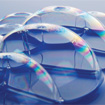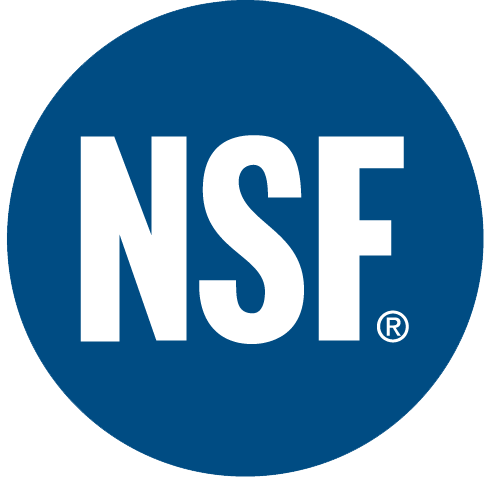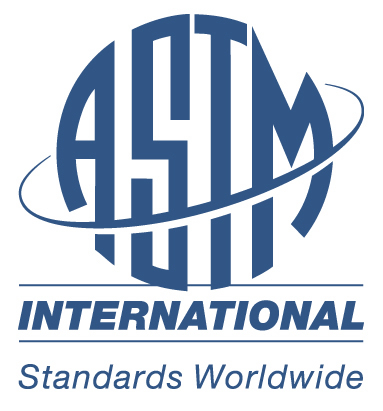
Cleaners: Standards
Standards-based certification programs help purchasers identify green cleaners. Green seal and Ecologo both verify that products meet standards developed through open, stakeholder-based processes consistent with the Iso 14020 and 14024 environmental label guidelines. Both programs conduct on-site audits as part of their certification process.
In addition to these certification programs, the U.S. Environmental Protection Agency’s Design for the Environment (DfE) Formulator Initiative and NSF International provide programs designed to help manufacturers improve the environmental performance of their products or define protocols to help manufacturers evaluate and improve their products.
Download the Standards Comparison Chart (.xls) that compares how the GreenSeal, EcoLogo, and Green Star certifications address a variety of social, environmental, and performance criteria.
Recommended Standards
 Green Seal
Green Seal
Green Seal is a Washington D.C.-based nonprofit, independent standard-setting organization certifying a range of products and services, including general purpose cleaners, bathroom cleaners, glass cleaners, carpet cleaners and more.
GC-11: Powdered Laundry Bleach (first edition: August 30, 1996)
GS-08: Household Cleaners (second edition: July 2, 2007)
GS-34: Degreasers (first edition: May 31, 1999)
GS-40: Industrial & Institutional Floor Care Products (first edition: Nov. 12, 2004)
GS-41: Industrial & Institutional Hand Cleaners (June 2006, co-published with EcoLogo)
GS-42: Cleaning Services (first edition: Sept. 1, 2006)
GS-37: Industrial & Institutional Cleaners (Fourth Edition, April, 2008)
 EcoLogo
EcoLogo
EcoLogo is the standards-based labeling system in the Environmental Choice Program (ECP), Environment Canada’s ecolabeling program. The program certifies a range of products, including hand cleaners, window & glass cleaners, boat & bilge cleaners, vehicle cleaners, degreasers, cooking appliance cleaners, cleaning products with low potential for environmental illness and endocrine disruption, bathroom cleaners, dish cleaners, carpet cleaners, and disinfectants.
CCD-104: Industrial Hand Cleaners (June 2006, co-published with Green Seal)
CCD-146: (A) Window and Glass Cleaner; (B) Boat and Bilge Cleaners; (C) Vehicle Cleaner for Household and Institutional use; (E) Degreasers; (F) Industrial Cleaners; (G) Cooking appliance cleaners; (I) Cleaning Product with Low Potential for Environmental Illness and Endocrine Disruption; (J) Bathroom Cleaners; (K) Dish Cleaners
CCD-148: Carpet and Upholstery (first edition: June 10, 2004)
Other Standards and Programs
 U.S. Environmental Protection Agency’s Design for the Environment (DfE) Formulator Initiative
U.S. Environmental Protection Agency’s Design for the Environment (DfE) Formulator Initiative
Design for the Environment Formulator Program Elements (Draft February 2008)
The DfE Formulator Initiative works with cleaning product manufacturers interested in improving the environmental performance of their products. The DfE program reviews ingredients and recommends safer alternatives.
DfE does not recommend or endorse products, but companies that reformulate their products based on its recommendations are eligible to use the DfE logo on their product. The logo indicates that the DfE review team has screened each ingredient in the product for potential human health and environmental effects and that, based on currently available information, predictive models, and expert judgment, the product contains only those ingredients that pose the least concern among chemicals in their class. More than 160 products from 38 companies are currently eligible to use the logo. Some of the products recognized by DfE are also certified by Green Seal or EcoLogo. For a list of companies working with DfE, and the approximately 160 products eligible to use the DfE logo, visit www.epa.gov/dfe/pubs/projects/formulat/formpart.htm.
U.S. Green Building Council (USGBC)
 The USGBC awards buildings LEED (Leadership in Energy and Environmental Design) certifications at the Certified, Silver, Gold, and Platinum levels, based on the number of credits earned in a variety of categories. There are several versions of the LEED standards, but the most relevant for cleaners is the standard used for existing buildings, known as the LEED-EB Operations & Maintenance standard. Adopting a green cleaning policy is a minimum requirement for certification in the Indoor Environmental Quality section of the standard (EQ Prerequisite #3). Optional points toward certification can be obtained by instituting a “high-performance cleaning program” (EQ 3.1 – 1 point), which requires the use of certified products. Up to three points canbe obtained by purchasing “sustainable cleaning products and materials” (EQ 3.4-3.6). One point is attainable for every thirty percent of the total annual purchases that meet either GS-37 standards, Environmental Choice/EcoLogo standards, or—for floor care products—the California Code of Regulations on VOC levels. Additional points are obtainable by using “sustainable cleaning equipment” (EQ 3.7), and by using entryway systems that minimize the amount of dirt tracked into the building (EQ 3.8).
The USGBC awards buildings LEED (Leadership in Energy and Environmental Design) certifications at the Certified, Silver, Gold, and Platinum levels, based on the number of credits earned in a variety of categories. There are several versions of the LEED standards, but the most relevant for cleaners is the standard used for existing buildings, known as the LEED-EB Operations & Maintenance standard. Adopting a green cleaning policy is a minimum requirement for certification in the Indoor Environmental Quality section of the standard (EQ Prerequisite #3). Optional points toward certification can be obtained by instituting a “high-performance cleaning program” (EQ 3.1 – 1 point), which requires the use of certified products. Up to three points canbe obtained by purchasing “sustainable cleaning products and materials” (EQ 3.4-3.6). One point is attainable for every thirty percent of the total annual purchases that meet either GS-37 standards, Environmental Choice/EcoLogo standards, or—for floor care products—the California Code of Regulations on VOC levels. Additional points are obtainable by using “sustainable cleaning equipment” (EQ 3.7), and by using entryway systems that minimize the amount of dirt tracked into the building (EQ 3.8).
The LEED standard for Schools addresses similar design and management concerns in the Innovative Design and Process, Low Impact Cleaning and Maintenance Equipment Policy credit. To earn the one possible point, schools should use high efficiency, low emissions equipment. See page 75 of the LEED for Schools rating system.
LEED for Existing Buildings: Operations and Maintenance
LEED for Schools 2007 Rating System
NSF International
 NSF International developed a product development process-environmental management system standard for hard surface cleaners to help manufacturers continually improve the environmental performance of their products. The standard provides a guide to manufacturers in establishing a product stewardship practice that enhances a manufacturer’s capability to minimize health and environmental impacts at all stages of the product life cycle. Additional information on the NSF standard is available at http://webstore.ansi.org/ansidocstore/product.asp?sku=NSF%2FANSI+143-06.
NSF International developed a product development process-environmental management system standard for hard surface cleaners to help manufacturers continually improve the environmental performance of their products. The standard provides a guide to manufacturers in establishing a product stewardship practice that enhances a manufacturer’s capability to minimize health and environmental impacts at all stages of the product life cycle. Additional information on the NSF standard is available at http://webstore.ansi.org/ansidocstore/product.asp?sku=NSF%2FANSI+143-06.
GreenGuard
 The GREENGUARD Environmental Institute is a nonprofit organization that oversees the GREENGUARD Certification Program, a program that seeks to establish acceptable indoor air standards for indoor products, environments, and buildings. This third-party testing program evaluates low-emitting products and materials. The GREENGUARD Indoor Air Quality Certification Program certifies products based on their measured chemical emissions levels. This incorporates the Standard for Cleaning Products and Systems and the Standard for Children & Schools. (The latter standard requires reduced chemical levels compared to the former.) Chemical emissions are measured and reviewed across a broad range of exposure levels established by the U.S. Environmental Protection Agency (EPA) and the Agency for Toxic Substances and Disease Registry (ATSDR).
The GREENGUARD Environmental Institute is a nonprofit organization that oversees the GREENGUARD Certification Program, a program that seeks to establish acceptable indoor air standards for indoor products, environments, and buildings. This third-party testing program evaluates low-emitting products and materials. The GREENGUARD Indoor Air Quality Certification Program certifies products based on their measured chemical emissions levels. This incorporates the Standard for Cleaning Products and Systems and the Standard for Children & Schools. (The latter standard requires reduced chemical levels compared to the former.) Chemical emissions are measured and reviewed across a broad range of exposure levels established by the U.S. Environmental Protection Agency (EPA) and the Agency for Toxic Substances and Disease Registry (ATSDR).
ASTM International
 Many green cleaning standards reference performance tests developed by ASTM International, an international standards development organization for commercial products. The ASTM standard development process is consensus-based with stakeholders as members representing an equal vote in determining a standard’s legitimacy. ASTM International covers a wide range of cleaning products and provides guidelines for use in institutional and commercial buildings. ASTM does not verify that products are tested according to a standard.
Many green cleaning standards reference performance tests developed by ASTM International, an international standards development organization for commercial products. The ASTM standard development process is consensus-based with stakeholders as members representing an equal vote in determining a standard’s legitimacy. ASTM International covers a wide range of cleaning products and provides guidelines for use in institutional and commercial buildings. ASTM does not verify that products are tested according to a standard.
The Association for the Advancement of Sustainability in Higher Education (AASHE)

 |
This work by the Responsible Purchasing Network is licensed under a Creative Commons Attribution-Noncommercial-No Derivative Works 3.0 United States License. |
Feedback on this Guide
Please contact us with corrections, additions, policies, or questions.
![]() Submit Feedback
Submit Feedback

